Search and Rescue Service Ships
Ships without which the fleet can not do. The modern search and rescue service of the navy, the Department of search and rescue operations of the Russian Navy (UPASR), has existed since 1993. This is a special service of the Russian Navy, designed to perform search and rescue support (PSO) of the fleet forces: search and assist damaged and distressed ships, rescue their personnel, raise sunken ships, and rescue crews of aircraft that crashed over by the sea.
The naval command and control agencies of the Russian Navy are subordinate to the forces of the Navy PSO (military units), which include naval and raid search and rescue vessels (boats) of various types and projects:
1) rescue vessels of submarines;
2) rescue tugs;
3) diving vessels (bots, boats);
4) fire-fighting vessels (boats).
Search and rescue service vessels, their features and special equipment, as well as rescue deep-sea vehicles will be considered in this article.
Killer vessels are designed for underwater cargo operations: setting up dead anchors, booms, clearing fairways, lifting sunken objects. Usually low-sided single-deck, with a powerful lifting device, usually located in the aft. In essence, they are a seaworthy high-speed version of the floating crane.
Project 141 pilot and rescue vessels were built in the 1980s in Rostock (GDR). The vessels were designed for receiving from shore, transporting, staging and cleaning raid equipment, consisting of anchors, barrels, chains and steel ropes. Thanks to the lifting equipment on board, vessels are able to participate in rescue, ship-lifting and underwater technical operations.
Main characteristics: total displacement of 5250 tons. Maximum speed 13,7 knots. Cruising range 2000 miles at 11 knots. Autonomy is 45 days. The crew is 47 people. Power plant - 2 diesel engines, 3000 hp
Some of the vessels were converted into rescue ships with the installation of special equipment, among them: GAS Oredezh-M, OGAS MG-329M Sheksna, GAS sound-communication communication Proteus-6, GAS sound-communication communication MGV-5N, 1 pressure chamber, 1 MTK-200 marine television complex.
The project vessels are based on inhabited rescue deep-sea vehicles (OGAS) and uninhabited underwater vehicles. For example, the Panther Plus uninhabited apparatus, capable of operating at a depth of up to 1000 meters, is based on the Alexander Pushkin killer ship. The device is equipped with two mechanical manipulators Shilling Orion and RigMaster, on which it is possible to install cable cutters and a circular saw for cutting complex structures up to 90 millimeters thick.
The Panther Plus lightweight working TPA includes a system for automatically keeping depth and course, an echo sounder, a complex of underwater positioning with satellite GPS, and a device for soil erosion. The device has two controlled cameras with increased photosensitivity, located above the manipulators, and rear-view cameras that allow you to record underwater data on the DVR and control the actions of the manipulators.
One of the main advantages of the complex is air mobility, which allows you to quickly using military transport aviation deliver it anywhere in the world.
The fleet’s rescue service includes 4 ships of project 141.
Project 419 vessels were built in the 1960-1970s in Rostock, East Germany. These vessels have a total displacement of 3151,4 tons. Full speed - 13,2 knots. The range is 4000 miles. The crew is 45 people. Powerplant - 2 diesel engines of 885 hp
The fleet’s rescue service includes 1 project 419 vessel.
Rescue ship "Commune" it deserves a separate article, because it is the oldest ship in the world, actually in service and performing combat missions. It entered the combat structure of the fleet in 1915. During its service, the ship has repeatedly successfully coped with the tasks of raising sunken submarines and other objects.
The ship has a displacement of 3100 tons, cruising range - 4000 miles, crew - 23 people. The power plant includes two diesel engines with a capacity of 600 hp.
The vessel is equipped with an underwater robot "Panther Plus" and can be the carrier of deep-sea rescue vehicles.
Rescue vessel "EPRON" project 527M - Another veteran of the Russian Navy. It became part of the fleet in the distant 1959. Nevertheless, to this day it has successfully completed its tasks.
The vessel has a total displacement of 3034 tons, full speed - 18,8 knots, cruising range - 10 miles, crew - 500 people. Powerplant - 135 diesel engines of 2 hp
Radio-technical and sonar weapons: two Don radar stations, GAS Pegasus-2M, GAS Oredezh-1, GAS sound-communication communications MG-26 Khosta.
Special equipment: winch 25 tons, cargo boom 12 tons, biteng - two 200 tons each, capacity of drainage means 3600 cubic meters. m / h, seven shafts for fire fighting with a capacity of 220 cubic meters. m / h, diving bell VK for depths up to 800 m, diving bell SK-64 for depths up to 500 m, working chamber RK-680 for depths up to 450 m, observation camera NK for depths up to 300 m, pressure chamber complex, complex of normobaric rigid Hardsuit 1200 spacesuits, Tiger remote-controlled underwater vehicle, Panther Plus deep-sea remote-controlled vehicle.
The vessel provides towing of vessels with a displacement of more than 15 tons. In its four interconnected pressure chambers, up to 000 people can simultaneously undergo decompression.
Rescue ships of project 05360 were built in the 1970s at the Vyborg Shipyard. Ships of project 05360 are carriers of underwater rescue vehicles and shells. Designed for search, marking and inspection of sunken objects and rescue operations using underwater vehicles.
Main characteristics: full displacement of 7460 tons. Full speed is 15,85 knots. Cruising range of 6500 miles at 14 knots. The crew of 96 people. They can take on board 40 rescued people. Powerplant: 1 diesel, 6100 hp
Special equipment: 2 autonomous underwater vehicles, 1 underwater bell, television control equipment MTK-200.
The fleet currently has two ships of this project.
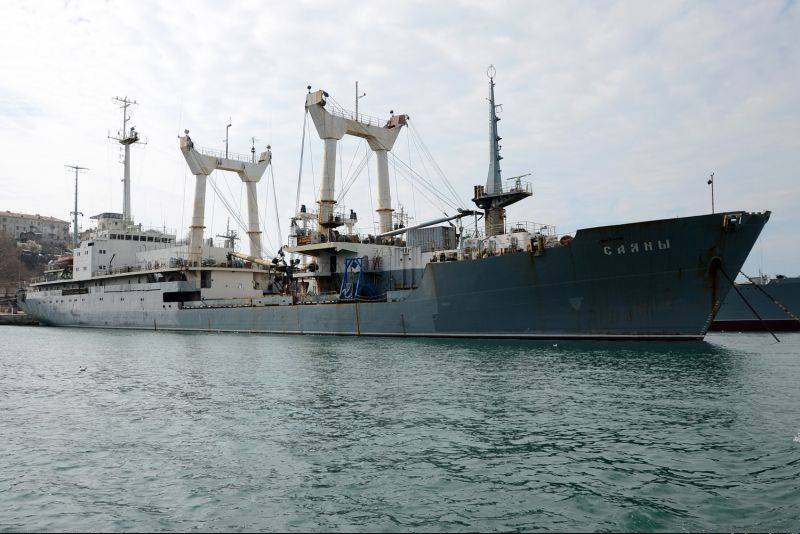
05361 Rescue Ship
Rescue ships of project 05361 were built in the 1980s at the Vyborg Shipyard. Search and rescue vessels of project 05361 are carriers of underwater rescue vehicles and shells. Designed for search, marking and inspection of sunken objects and rescue operations using underwater vehicles.
Main characteristics: full displacement of 7980 tons. Full speed 16,6 knots. Cruising range of 6500 miles at 14 knots. They can take on board 40 rescued people. The crew of 84 people.
To search for sunken objects, the complex towed telecontrol finder Trepang-2 is used for depths up to 2 km. The vessels are equipped with hydroacoustic means to determine their place and the place of the underwater vehicle, for underwater communication and to detect underwater objects.
The fleet includes two project ships.
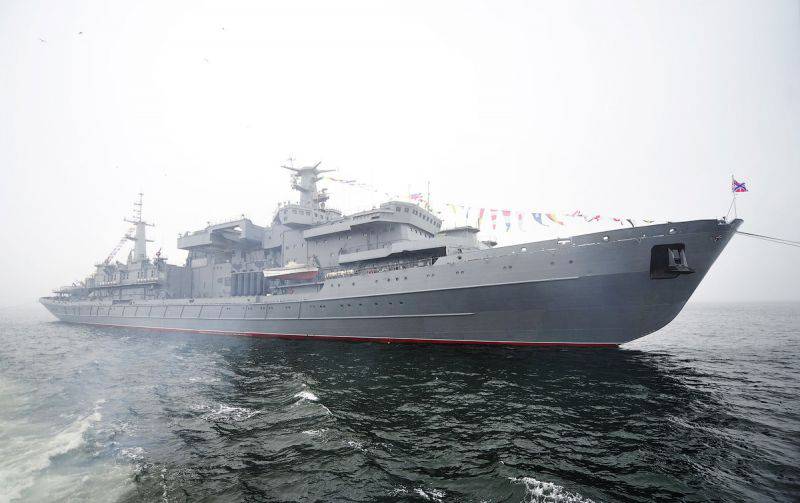
Rescue vessel Alagez, project 537 Octopus. Photo: www.newsvl.ru
Rescue vessel “Alagez” of project 537 “Octopus” - The only representative of the project in the fleet. The ship went into service in 1989.
Main characteristics: total displacement of 14 300 tons. Full speed 20,4 knots. Cruising range 15 miles at 000 knots. The crew of 10 people, including 315 officers and 62 warrant officers. Powerplant: 80 diesel engines of 2 hp, 12650 bow thrusters, 2 aft retractable helical-steering columns.
Radio engineering and hydroacoustic weapons: general-purpose radar МР-302 "Felling", 3 radar "Don", GAS "Gamma", MGA-6 "Sperm whale".
Special equipment: 2 diving complexes for depths of up to 200 m, 1 MTK-200 marine television complex, 5 water-gun mounts of 500 m each3/ h, drainage facilities 4000 m3/ H.
The ship has several high-speed boats, as well as a hangar and a platform for receiving the search and rescue helicopter Ka-27.
The vessel provides for the simultaneous placement of uninhabited remotely controlled and four inhabited underwater vehicles. The main hoisting device provides for the descent and lifting of underwater vehicles when the waves are up to 5 points. The vessel has a bow thruster, which allows it to be stably held in a given place, and a deep-sea anchor device.
A complex of diving equipment provides diving operations at depths of up to 250 meters. It includes a pressure chamber, which allows simulating diving descents to maintain the necessary physiological training of divers in long autonomous trips. In the pressure chamber of the diving complex, rescue divers can be decompressed. The vessel is equipped with modern means of providing assistance to emergency ships and sunken submarines. The ship is equipped with a British-made Tiger remote-controlled deep-sea vehicle.
Rescue ship "Igor Belousov" - the lead rescue ship of the ocean class, project 21300 (code "Dolphin").
Designed to rescue crews, supply air, electricity and rescue equipment to emergency submarines or surface ships lying on the ground or in the surface. In addition, the vessel can search and examine emergency facilities in a given area, including as part of international marine rescue units.
The vessel has a total displacement of 5310 tons, cruising speed - up to 15 knots, cruising range - 3500 miles, crew - 96 people, passenger capacity - 120 seats for the rescued (60 in pressure chambers).
Power plant: 2 boilers KGV 1,0 / 5-M, 4 diesel generators DG VA-1680 - 4 at 1680 kW, 2 diesel generators DG VA-1080 - 2 at 540 kW. Propulsion: two propeller motors of 2400 kW each with access to two Aquamaster US 305FP propeller-driven columns, two bow thrusters of 680 kW each.
The following navigational, radio-electronic and navigational weapons were installed on the ship: Chardash automated navigation complex, MP-231 navigation radar, Pal-N3 navigation radar, sonar navigation system, Ruberoid automated communication complex, hydrometeorological support, MTK- multifunctional television complex 201M, GMDSS facilities, shipboard automated telephone exchange, “Screen-TsM” shipboard color television broadcasting system.
Hydroacoustic armament:
1) sonar station "Livadia";
2) sonar connection station “Structure-SVN”;
3) navigation folklore sonar system;
4) sonar station PDSS "Anapa";
5) a towed search complex with a working depth of up to 2000 m, including a side-scan sonar and a magnetometer.
Special complexes, devices and equipment.
GVK-450 “Delfin-GVK” deep-sea diving complex. The complex is designed for 120 seats, located on 5 decks in the middle of the vessel and occupies more than 20% of the volume of the hull. It is based on 5 pressure chambers that can accommodate 60 rescued submariners. Also in the complex are trained divers before diving. The pressure chambers have different purposes: residential, sanitary and reception-and-weekend. The complex includes a life support system for regulating temperature and humidity, oxygen saturation, removal of gaseous impurities and odors.
Rescue deep-sea vehicle of project 18271 "Bester-1". Diving belldesigned for diving to a depth of 450 meters. It has the shape of a vertical cylinder and is equipped with portholes. Inside, communication and video surveillance equipment, breathing mixture supply panels for divers and hot water for their heating were installed. The bell houses a diver operator and two working divers with full equipment. For the divers to go, the bell is docked with the GVK-450 receiving and output compartment. The descent and ascent is carried out by the descent and lifting device.
Normobaric spacesuits HS-1200 designed to work at a depth of 60 m and equipped with highly sensitive sonar and television equipment. They allow to carry out the necessary preparation of the facility for the further operation of the inhabited rescue apparatus or divers.
Uninhabited remotely controlled underwater vehicle Seaeye Tiger with a working depth of up to 1000 m.
Two onboard unified work and rescue boats of project 21770 Katran.
Aircraft complex with a helipad.
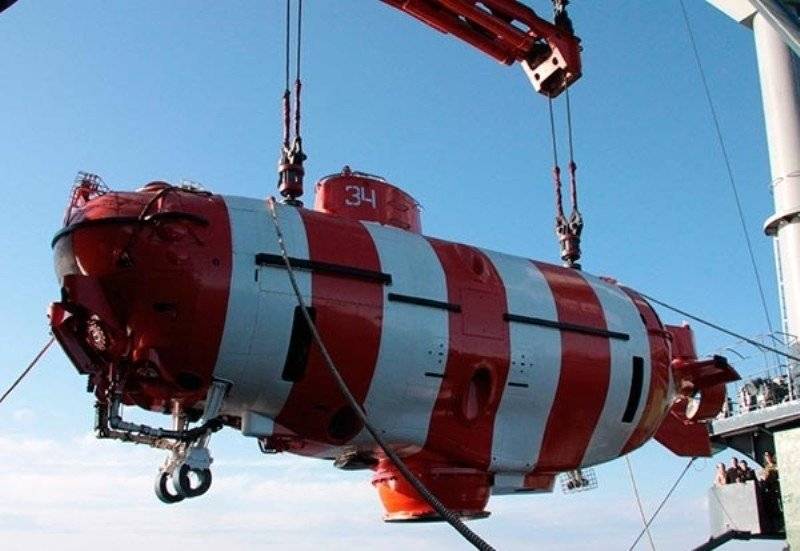
Rescue deep-sea vehicle of the project 1855 "Prize". Photo: mil.ru
Rescue deep-sea vehicles of the project 1855 "Prize" belong to the class of mini-submarines. The tasks of the SGA of the “Prize” type do not include scientific and oceanographic research, the devices are designed to rescue crews from emergency submarines by docking to emergency exits of submarines.
SGAs have an underwater displacement of 110 tons, an underwater speed of up to 3,7 knots, a range of 39 km, a maximum immersion depth of 1000 m, a crew of 4 people plus 20 passengers, autonomy of 120 hours or 10 hours with passengers.
The fleet includes 4 SGA of the Prize project - one for each fleet. Vessels carriers: ships of projects 141С, 05360, 05361, 537 "Octopus" and the rescue vessel "Commune".
Rescue deep-sea vehicles of the project 18271 "Bester-1" they have an underwater displacement of about 50 tons, a maximum speed of up to 3,2 knots, a working depth of immersion of 720 m, a maximum depth of 780 m, a range of 9-11 miles, a working autonomy without passengers for 72 hours, an autonomy of working with rescued 10 hours, crew - 3 people, the number of people saved - 18 people.
The rotary suction chamber installed on this SGA allows performing a rescue operation when the roll of the emergency submarine is up to 45 degrees. ”
SGA can be transported by any vessel with a 50-ton cargo boom and even transport aircraft.
The fleet includes 2 SGA of this project. They are based on the vessels of projects 05360 and 05361, as well as on the court Igor Belousov ”of project 21300“ Dolphin ”.
Hospital ships of the V-320 Ob project were built in the 1980s in Szczecin, Poland. The main work of these ships is the medical support of operational squadrons operating at a considerable distance from the main basing points, and fleet forces on the islands and in low-equipped areas of deployment.
The ships have a total displacement of 11623-11875 tons, a maximum speed of 19 knots, a cruising range of up to 10 miles, a crew of 000 people, and medical personnel of 124 people. The power plant of ships consists of 83 diesel engines with a capacity of 2 liters. with.
The hospital is able to receive the wounded and sick both from the shore and at sea. For this, two ladders are provided on each side, an electric crane for lifting six victims on the platform, a medical boat and a helicopter. The medical part is concentrated directly in the middle part of the ship to reduce pitching from sea unrest. There are surgical, resuscitation, therapeutic, infectious, dermatological and admission departments, intensive care units, wards for patients, an X-ray room, a diagnostic center, a pharmacy and a medical warehouse. Bed capacity: for patients - 100 beds, for vacationers - 200 beds, in the evacuation version - 450 beds.
The fleet includes 3 vessels of this project. However, only one of them has undergone modernization and is in a state of combat readiness.
Project 712 Sea Rescue Tugs were built in the 1980s in Finland by order of the USSR Navy. Vessels are designed for independent towing of surface ships and vessels with a displacement of up to 40 tons, as well as for carrying out limited rescue operations.
Project ships have a total displacement of 2980 tons, full speed of 16 knots, cruising range of up to 6120 miles, crew of 43 people. Power plant - 2 diesel engines of 3900 hp.
Special equipment: small-sized remote-controlled underwater vehicle "Tiger", diving equipment for work at a depth of 60 meters, a device for lifting people out of the water "Sprut-5", two evacuation and rescue containers "ESK-1", 8 submersible rescue electric pumps, 4 fireworks, tow biten, main tow cable with a diameter of 56 mm and a length of 750 meters.
The fleet currently has 4 ships of the project.
Project 714 Sea Rescue Tugs were built in Finland in the 1980s. These vessels have a total displacement of 2210 tons, speed - up to 14 knots, cruising range - up to 8000 miles, crew - 43 people. The power plant is represented by one 3500 hp diesel engine. The vessel was equipped with diving equipment for operation at a depth of up to 40 meters, 2 water-jet barrels.
The fleet includes 6 ships of the project 714.
Project 733C rescue tugs were built in the 1950-1960s. These vessels have a total displacement of 934 tons, full speed - 13,2 knots, cruising range - 8000 miles, crew - 51 people. Powerplant - 1 electric motor with a capacity of 1900 hp Special equipment: 2 fire monitors of 120 m each3/ h, drainage facilities with a capacity of 1000 m3/ H.
The fleet includes 3 vessels of the specified project.
Conclusion
For ease of reading and perception of material about the ships of the search and rescue service of the Russian Navy is divided into two articles. The first examined mainly the largest, high-tech and equipped vessels. The second will be devoted to the courts simpler, but, nevertheless, very useful and necessary. It will also summarize the UPASR vessels of the Russian Navy and draw conclusions.
So far, we will only summarize the intermediate results. The Russian Navy is armed with quite a few search and rescue large vessels. However, a small number of deep-sea rescue vehicles (1-2) per fleet is immediately evident. That is, not every vessel capable of carrying such devices is equipped with them. Another thing that attracts attention is the age of the ships: all large vessels were built in the 1980s, that is, their service life is coming to an end. Of course, we can hope that some of them will still serve as the veterans of EPRON and the Commune serve, but there is no adequate replacement for them yet. The only bright spot is Igor Belousov. Separate issue - killer ships: can we build them? After all, all relatively modern ships of this type were built in the GDR. Do we have such competencies? In addition, there is a widespread use of foreign diving equipment, remote control devices, propulsion units. Most likely, the purchase of this equipment today is either impossible or very difficult, as well as its maintenance. Thus, the need for its import substitution is obvious.
To be continued ...
- Dmitry from Voronezh
- https://cdn.photosight.ru, https://2017.f.a0z.ru, https://radikal.ru, https://fleetphoto.ru, https://ic.pics.livejournal.com, https://fleetphoto.ru, https://sites.wrk.ru, https://sudostroenie.info, https://img4.goodfon.ru, https://www.vladtime.ru, https://www.korabel.ru, https://2018.f.a0z.ru, https://fleetphoto.ru, https://fleetphoto.ru, https://i.mycdn.me
- Ships and submarines in service with the Main Directorate for Deep-Water Research
Auxiliary vessels: ships the fleet cannot do without
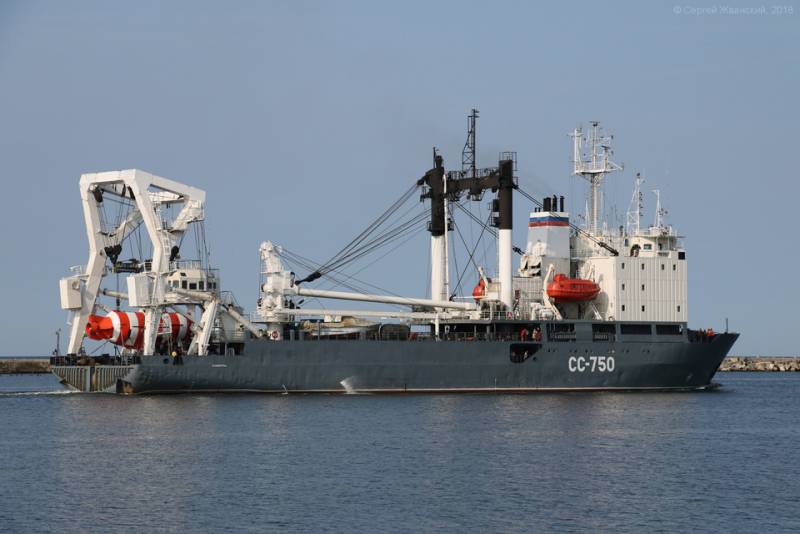
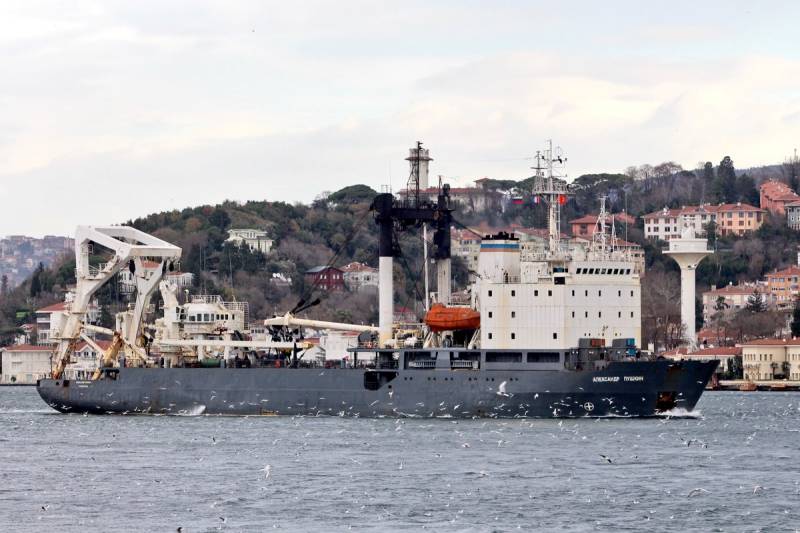
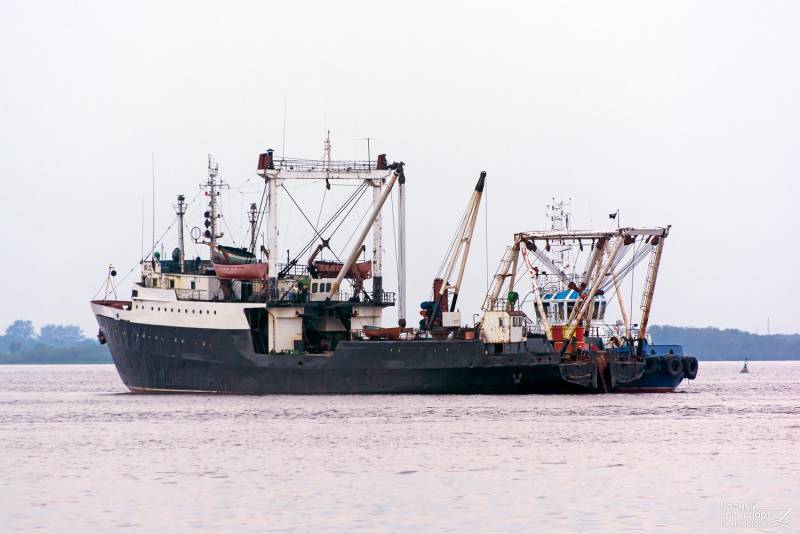
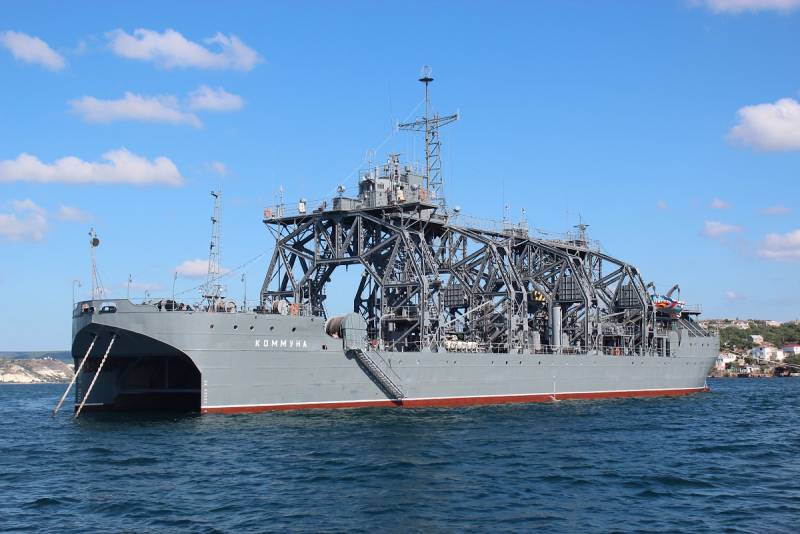
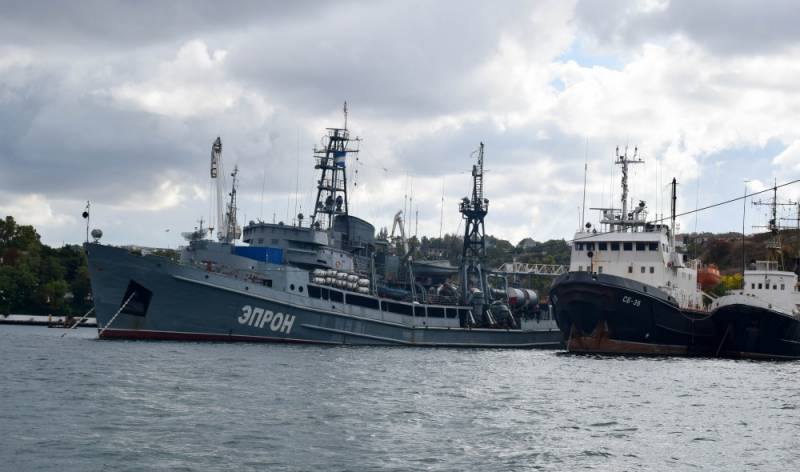
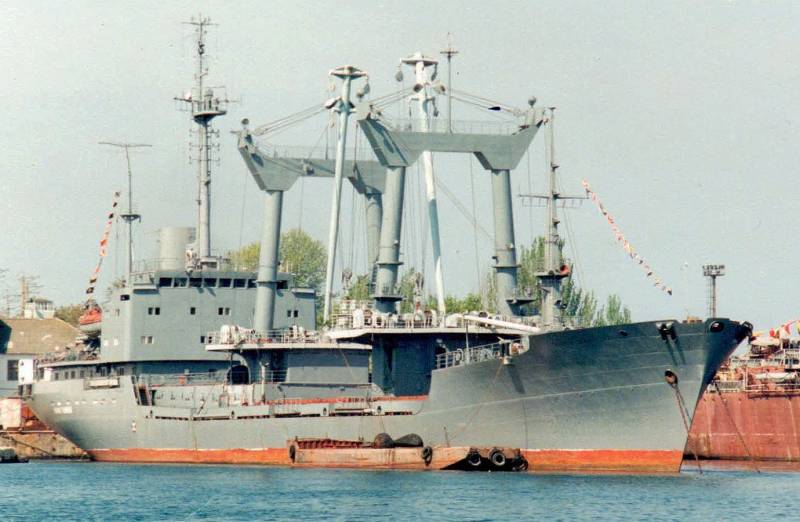






Information